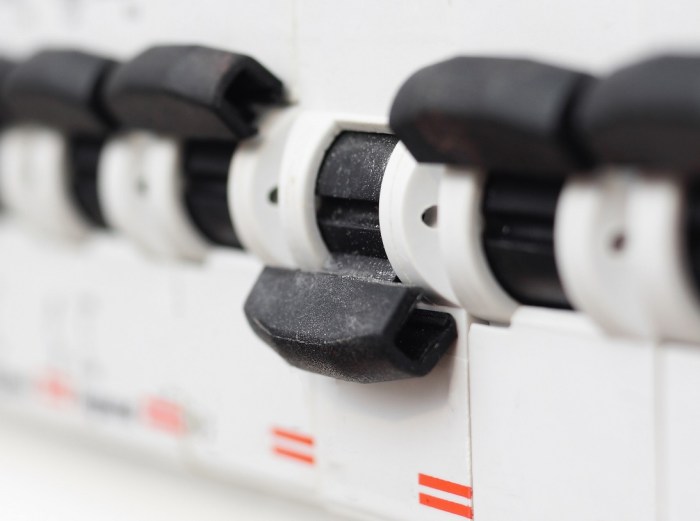
Navigating the complexities of student loan debt can be daunting. For borrowers facing financial hardship, a reaffirmation agreement might seem like a lifeline. This document explores the intricacies of reaffirmation agreements, outlining the process, legal implications, and crucial considerations before signing on the dotted line. We’ll examine when a reaffirmation agreement is beneficial and when it might lead to further financial strain, providing a balanced perspective to help you make informed decisions.
Understanding the terms and conditions, potential risks, and available alternatives is paramount. This guide aims to equip you with the knowledge necessary to confidently assess whether a reaffirmation agreement aligns with your unique financial circumstances and long-term goals. We will delve into the specifics of the application process, required documentation, and potential delays, providing a comprehensive overview of this often-overlooked aspect of student loan management.
What is a Reaffirmation Agreement for Student Loans?

A reaffirmation agreement for student loans is a legally binding contract between a borrower and their lender. It essentially restarts the loan after a discharge, such as bankruptcy, and makes the debt legally enforceable again. This means the borrower agrees to repay the debt even though they’ve previously been released from the obligation. It’s a significant decision with long-term financial implications, and understanding its intricacies is crucial before signing.
A reaffirmation agreement, in the context of student loans, is a written promise made by a borrower to repay a discharged student loan debt. This agreement is typically made after a discharge in bankruptcy or after a period of default. The lender agrees to reinstate the loan, and the borrower commits to a new repayment schedule. The agreement is legally binding and can have serious consequences if the borrower fails to meet the terms.
Benefits of a Reaffirmation Agreement
Reaffirmation agreements might be beneficial in specific circumstances. For instance, a borrower might choose this option if they want to avoid negative credit impacts associated with a discharged loan. Maintaining a good credit score is vital for future financial endeavors, such as securing a mortgage or auto loan. Furthermore, reaffirming a loan could allow a borrower to keep assets that might otherwise be at risk. For example, a co-signer on the original loan might be relieved of responsibility, or a borrower might avoid losing property due to a loan default. Finally, some borrowers might find the terms of a reaffirmation agreement more favorable than other debt management options.
Circumstances Where a Reaffirmation Agreement is Not Advisable
There are several situations where entering into a reaffirmation agreement is unwise. If a borrower is struggling financially, taking on a new obligation might exacerbate their financial difficulties. The added debt burden could lead to further financial strain and potential default. Moreover, if the terms of the reaffirmation agreement are unfavorable, such as a high interest rate or an extended repayment period, it might not be a beneficial solution. Borrowers should carefully compare the terms of the reaffirmation agreement with other available options before making a decision. Finally, if the borrower anticipates future financial difficulties, such as job loss or unexpected medical expenses, reaffirming the loan could be a risky proposition.
Reaffirmation Agreements Compared to Other Debt Management Options
Reaffirmation agreements differ significantly from other student loan debt management options, such as income-driven repayment plans, loan consolidation, or forbearance. Income-driven repayment plans adjust monthly payments based on income and family size, offering more flexibility. Loan consolidation combines multiple loans into one, simplifying repayment. Forbearance temporarily suspends payments but doesn’t reduce the total debt. Unlike these options, reaffirmation restarts a discharged debt, making it legally binding again, regardless of the borrower’s current financial situation. This means the borrower assumes a higher level of risk compared to other, more flexible options. A careful comparison of the advantages and disadvantages of each approach is crucial before making a decision.
The Process of Entering a Reaffirmation Agreement
Entering into a student loan reaffirmation agreement is a formal process that requires careful consideration and adherence to specific steps. It involves a commitment from both the borrower and the lender, ultimately leading to a legally binding agreement modifying the original loan terms. Understanding the process ensures a smoother transition and minimizes potential complications.
The process generally involves several key steps, from submitting an application to finalizing the agreement. Careful attention to detail during each step is crucial for a successful outcome. The lender will thoroughly review the application and supporting documentation, and any discrepancies or missing information can lead to delays.
Reaffirmation Agreement Application Steps
The application process for a reaffirmation agreement typically involves several distinct steps. These steps ensure the lender has all the necessary information to make an informed decision. The timeline for each step can vary depending on the lender and the complexity of the borrower’s financial situation.
| Step | Action | Required Documents | Timeframe |
|---|---|---|---|
| 1. Application Submission | Complete and submit the reaffirmation agreement application form provided by the lender. This usually involves providing personal information, loan details, and current financial information. | Application form, copy of government-issued ID, Social Security number | Typically a few days to a week |
| 2. Documentation Review | The lender reviews the submitted application and supporting documentation for completeness and accuracy. | Proof of income (pay stubs, tax returns), bank statements, credit report | 1-4 weeks, depending on lender workload and complexity of the application |
| 3. Credit Check and Financial Assessment | The lender will conduct a credit check and assess the borrower’s current financial situation to determine their ability to repay the loan under the new terms. | Consent to credit check, additional financial documentation as requested by the lender | 1-2 weeks |
| 4. Lender Approval or Denial | Based on the review and assessment, the lender will either approve or deny the reaffirmation agreement. Approval is not guaranteed. | None (Decision communicated to borrower) | 1-2 weeks after financial assessment |
| 5. Agreement Signing and Finalization | If approved, the borrower will receive the finalized reaffirmation agreement to review and sign. Once signed by both parties, the agreement becomes legally binding. | Signed reaffirmation agreement | A few days to a week after approval |
Lender’s Review Process and Potential Delays
The lender’s review process is crucial in determining the outcome of a reaffirmation agreement application. Thoroughness is paramount to ensure responsible lending practices. Delays can occur due to several factors, including incomplete applications, missing documentation, or a complex financial situation requiring additional review. For example, a borrower’s self-employment status might necessitate further scrutiny of income verification. Similarly, inconsistencies in reported income or discrepancies in credit history may prolong the review process. Clear communication with the lender throughout the process can help address any issues promptly and potentially prevent delays.
Legal and Financial Implications

Reaffirming your student loans is a significant legal and financial decision with lasting consequences. Understanding the potential benefits and risks is crucial before signing any agreement. This section will Artikel the key implications to help you make an informed choice.
Potential Risks and Benefits for Borrowers
Entering a reaffirmation agreement presents both advantages and disadvantages. A primary benefit is the potential to avoid the negative impacts of default, such as wage garnishment and damage to your credit score. Furthermore, reaffirmation might allow you to access certain financial products or opportunities that are unavailable to those with defaulted loans. However, reaffirmation essentially restarts your debt clock, extending your repayment period and potentially increasing the total amount you pay due to accumulated interest. It also means you remain legally liable for the debt even if your circumstances change drastically, such as job loss or illness. The risk is substantial, as the debt remains on your credit report, and failure to make payments results in serious consequences.
Impact on Credit Scores
A reaffirmed student loan will appear on your credit report, and timely payments will positively affect your credit score, potentially helping you secure loans, mortgages, or other financial products in the future. Conversely, missed payments on a reaffirmed loan will severely damage your credit score, impacting your creditworthiness for years to come. The impact is comparable to any other missed payment on a loan, but the amount of the debt and the length of the repayment period can significantly exacerbate the negative effect. For example, consistently making on-time payments on a large reaffirmed loan can substantially improve a credit score over time, while defaulting can lead to a significant drop, making it difficult to obtain credit in the future.
Implications of Defaulting on a Reaffirmed Student Loan
Defaulting on a reaffirmed student loan carries severe consequences. The lender can pursue legal action to collect the debt, potentially leading to wage garnishment, bank levy, or even lawsuits. Your credit score will suffer significantly, hindering your ability to obtain credit or favorable interest rates in the future. The debt can also be reported to credit bureaus, affecting your ability to rent an apartment, obtain a car loan, or even secure employment in certain fields. For instance, a default could lead to the loss of a security clearance, preventing someone from working in government or defense-related sectors.
Long-Term Financial Consequences of Reaffirmation Versus Other Debt Management Strategies
The long-term financial consequences of reaffirmation should be carefully weighed against alternative debt management strategies, such as loan consolidation, income-driven repayment plans, or bankruptcy. Reaffirmation extends the repayment period and increases the total amount paid due to interest, while other options may offer lower monthly payments or even forgiveness of a portion of the debt. For example, an income-driven repayment plan might significantly lower monthly payments based on income, potentially making repayment more manageable, whereas reaffirmation keeps the original repayment terms. Bankruptcy, while a drastic measure, can eliminate certain debts, although it comes with its own set of long-term financial and legal implications. The best strategy depends on individual circumstances and financial goals.
Alternative Solutions to Student Loan Debt

Before reaffirming your student loans, it’s crucial to explore alternative solutions that might offer more favorable terms or reduce your overall debt burden. These alternatives can significantly impact your long-term financial health and provide more manageable repayment options. Understanding your options is key to making an informed decision.
Several strategies exist to manage and potentially reduce your student loan debt. These include various repayment plans, consolidation options, and even potential forgiveness programs. Each option has its own set of advantages and disadvantages, which should be carefully weighed against the implications of a reaffirmation agreement.
Income-Driven Repayment Plans
Income-driven repayment (IDR) plans adjust your monthly payment based on your income and family size. This can make payments more affordable, particularly during periods of lower income. Several IDR plans exist, including the Revised Pay As You Earn (REPAYE), Income-Based Repayment (IBR), Income-Contingent Repayment (ICR), and Pay As You Earn (PAYE) plans. The specific plan’s eligibility requirements and payment calculations vary. While these plans lower monthly payments, they often extend the repayment period, leading to higher total interest paid over the life of the loan.
Loan Consolidation
Loan consolidation combines multiple student loans into a single loan with a new interest rate and repayment term. This can simplify repayment by reducing the number of payments you need to track. However, it’s essential to understand that consolidation may not always lower your overall interest rate, and it could potentially lead to a longer repayment period and higher total interest paid. The Federal Direct Consolidation Loan program is a common option for federal student loans.
Comparison of Alternatives to Reaffirmation
The following table compares reaffirmation with income-driven repayment plans and loan consolidation. Note that individual circumstances will significantly impact the actual outcomes.
| Feature | Reaffirmation | Income-Driven Repayment | Loan Consolidation |
|---|---|---|---|
| Monthly Payment | Potentially higher, fixed | Lower, income-based | Potentially lower or higher, fixed |
| Repayment Period | Original loan term | Extended | Potentially extended or shortened |
| Total Interest Paid | Potentially lower | Potentially higher | Potentially higher or lower |
| Credit Score Impact | Positive (if payments are made on time) | Neutral to slightly positive | Neutral to slightly positive |
| Complexity | Relatively simple | Moderate | Moderate |
Resources for Additional Information
Borrowers can find additional information about debt management options from several reputable sources. The Federal Student Aid website (studentaid.gov) provides comprehensive information on federal student loan programs, repayment plans, and consolidation options. The National Foundation for Credit Counseling (NFCC) offers free and low-cost credit counseling services, including assistance with debt management strategies. Additionally, many non-profit organizations and financial institutions provide resources and guidance on student loan repayment options. It is recommended to explore multiple sources to gain a comprehensive understanding of your options.
Illustrative Scenarios
Reaffirmation agreements for student loans can have drastically different outcomes depending on the individual’s financial situation and the terms of the agreement. Understanding these potential scenarios is crucial before making such a significant decision. The following examples illustrate situations where reaffirmation is beneficial and detrimental.
Reaffirmation as a Financially Sound Decision
Consider Sarah, a recent graduate with a stable job earning $60,000 annually. She has $30,000 in student loan debt with a high interest rate of 8%. Her credit score is excellent, allowing her to negotiate a lower interest rate of 5% through reaffirmation. By reaffirming her loans, Sarah secures a lower interest rate, saving her thousands of dollars in interest payments over the life of the loan. This reduces her monthly payment, improves her credit score further, and allows her to allocate more funds towards other financial goals, such as saving for a down payment on a house. The stability of her income and her excellent credit history make reaffirmation a financially responsible choice in her case.
Reaffirmation as a Poor Financial Decision
In contrast, consider Mark, who recently lost his job and is struggling to make ends meet. He has $40,000 in student loan debt with a 7% interest rate. His credit score is poor due to missed payments, making it difficult to secure a lower interest rate through reaffirmation. Reaffirming his loans would obligate him to monthly payments he can’t afford, potentially leading to further damage to his credit and increased debt through late fees and penalties. In Mark’s situation, reaffirmation would worsen his financial instability and would not be a sound financial decision. Instead, he should explore alternative solutions such as income-driven repayment plans or loan forgiveness programs.
Impact of Interest Rates and Loan Amounts on Long-Term Costs
Let’s compare two hypothetical scenarios to illustrate the impact of interest rates and loan amounts on the total cost of a reaffirmed loan.
Scenario A: $20,000 loan at 6% interest over 10 years. Using a standard amortization calculator, the total interest paid would be approximately $5,160, resulting in a total repayment of $25,160.
Scenario B: $20,000 loan at 8% interest over 10 years. The total interest paid would be approximately $7,150, resulting in a total repayment of $27,150.
Scenario C: $30,000 loan at 6% interest over 10 years. The total interest paid would be approximately $7,740, resulting in a total repayment of $37,740.
Scenario D: $30,000 loan at 8% interest over 10 years. The total interest paid would be approximately $10,770, resulting in a total repayment of $40,770.
These examples demonstrate that even a small increase in the interest rate or loan amount can significantly increase the total cost of the loan over time. Therefore, careful consideration of these factors is essential when deciding whether to reaffirm student loans. It is strongly advised to use an online loan amortization calculator to determine the precise impact of different interest rates and loan terms on the total cost of repayment.
Last Word
Ultimately, the decision to enter into a reaffirmation agreement for student loans requires careful consideration of your individual financial situation and long-term goals. Weighing the potential benefits against the inherent risks, exploring alternative solutions, and seeking professional financial advice are all crucial steps in this process. By understanding the intricacies of reaffirmation agreements and the available alternatives, you can make an informed choice that protects your financial well-being. Remember, responsible debt management is key to achieving long-term financial stability.
Key Questions Answered
What happens if I default on a reaffirmed student loan?
Defaulting on a reaffirmed student loan will severely damage your credit score and could lead to wage garnishment or tax refund offset. The consequences are generally more severe than defaulting on an unre-affirmed loan.
Can I reaffirm a private student loan?
Yes, reaffirmation agreements can apply to private student loans, but the process and eligibility criteria may vary depending on the lender.
How long does the reaffirmation process take?
The timeframe varies depending on the lender but can range from several weeks to several months. Expect delays due to processing times and required documentation.
Is reaffirmation always the best option?
No. Reaffirmation is only advisable in specific circumstances. Exploring alternative options like income-driven repayment plans or loan consolidation is crucial before making a decision.
